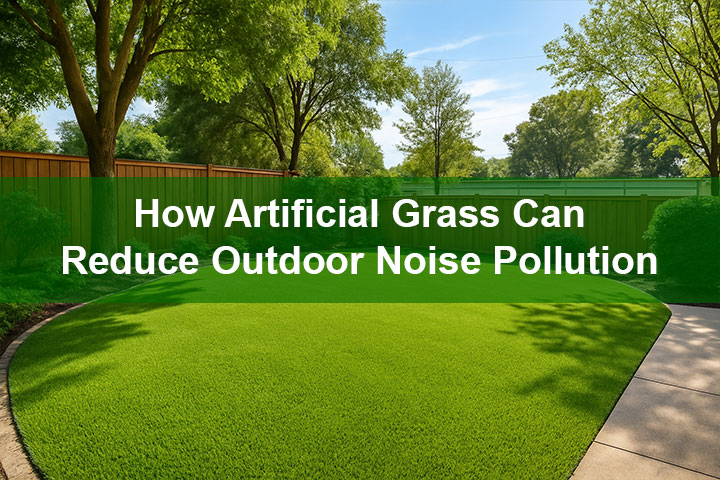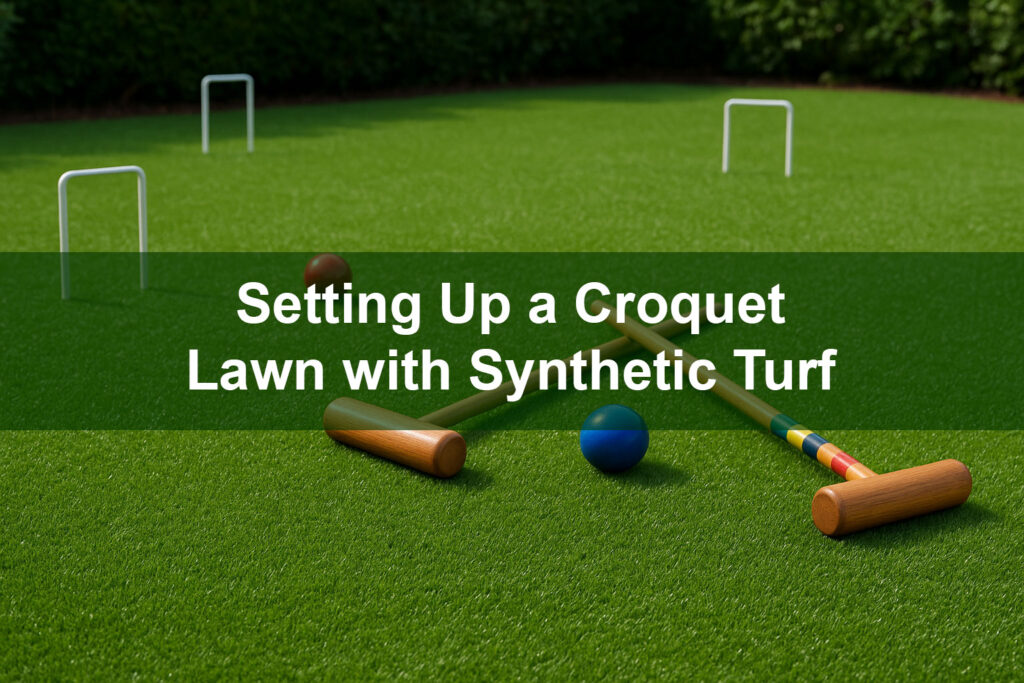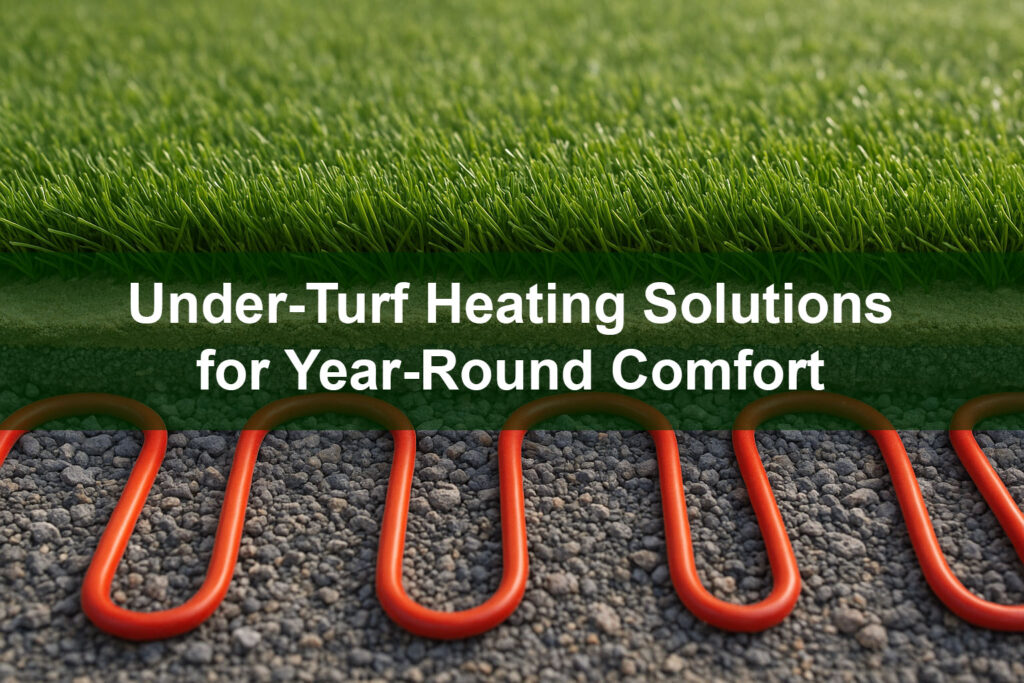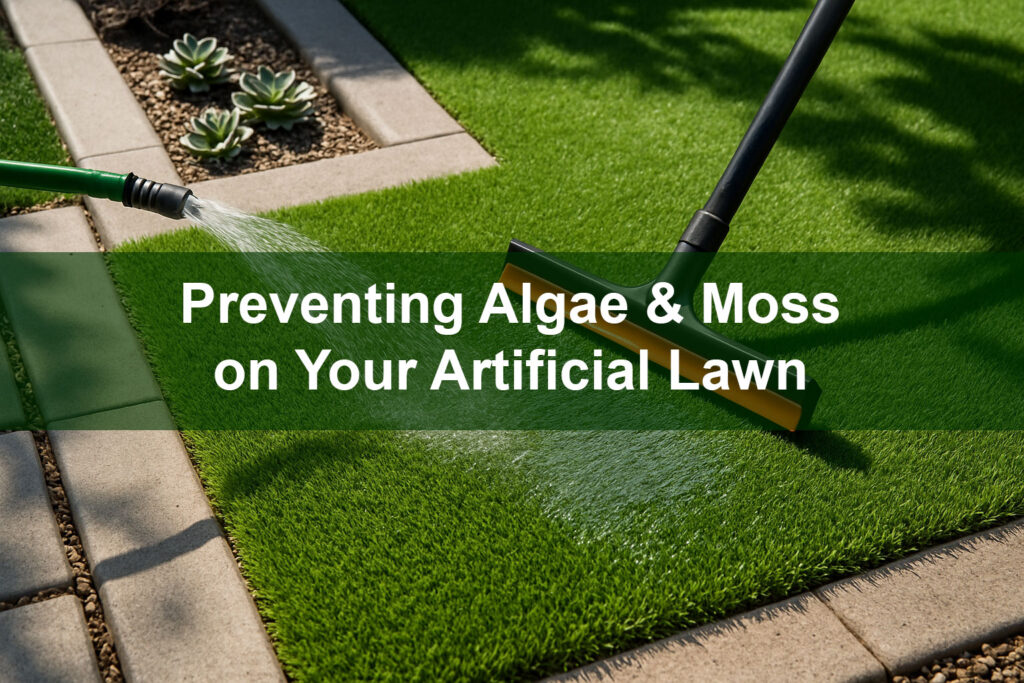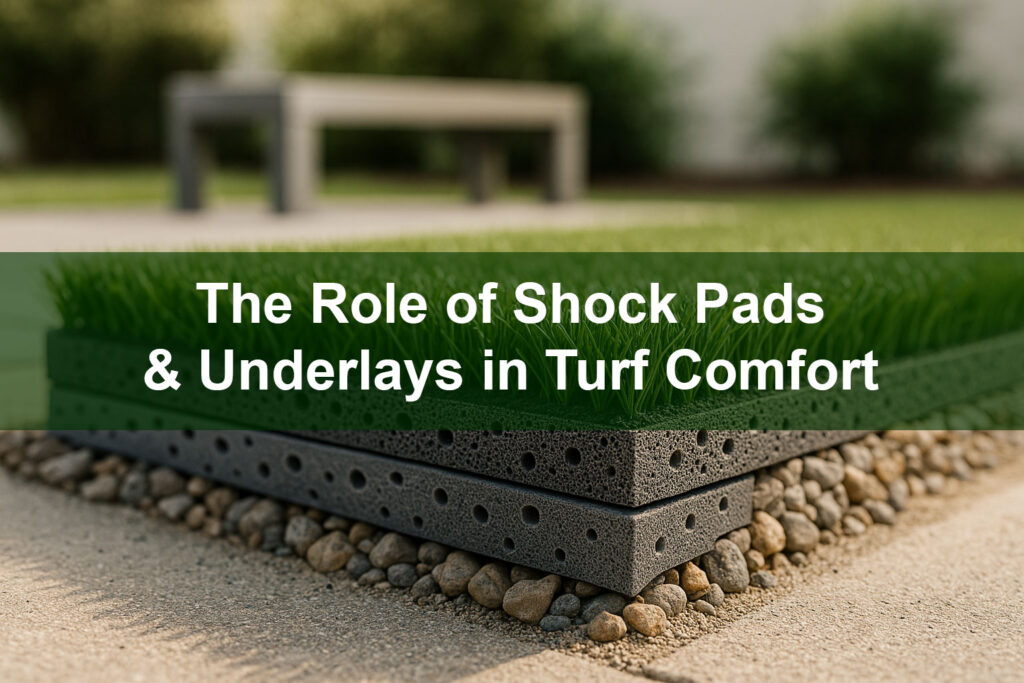Noise pollution is more than just an annoyance—it affects our health, comfort, and overall quality of life. Whether you live near a busy street, in a bustling urban environment, or next to active neighbors, unwanted outdoor noise can disrupt relaxation and make it difficult to enjoy your yard. Fortunately, artificial grass offers a surprising solution. Beyond its lush appearance and low maintenance, high-quality turf can play a meaningful role in reducing outdoor noise pollution. Let’s explore how.
What You’ll Learn
- How sound travels and why outdoor spaces amplify noise
- The acoustic properties of artificial grass
- Key design features that improve turf’s sound-absorbing capabilities
- Installation methods that maximize noise reduction
- How turf compares to other landscaping materials
- Maintenance tips to keep noise performance consistent
- Practical applications for homes, schools, and businesses
- Real-world examples of noise reduction with synthetic turf
1. Understanding Outdoor Noise Pollution
Noise pollution occurs when unwanted or disruptive sounds overwhelm an environment. In outdoor settings, common culprits include vehicle traffic, construction, HVAC systems, barking dogs, and recreational activities. Unlike indoors, where walls and insulation dampen sound, outdoor spaces often have fewer barriers. This allows sound waves to reflect off hard surfaces and travel farther, intensifying the problem. That’s where landscaping choices—including artificial grass—can make a difference.
2. The Acoustic Properties of Artificial Grass
Artificial grass acts as a natural sound absorber thanks to its layered composition. Turf fibers, infill materials, and backing systems work together to break up and dampen sound waves. Unlike concrete, asphalt, or bare soil, which reflect noise, turf introduces friction and texture that disrupt sound transmission. When properly installed, it can reduce ambient noise levels by several decibels, creating a quieter and more enjoyable environment.
3. How Turf Density and Infill Improve Sound Absorption
Not all turf performs equally when it comes to noise reduction. Denser turf with taller pile heights offers better acoustic control because the fibers trap more sound energy. Similarly, the choice of infill—whether sand, rubber, or organic blends—affects performance. Rubber infill, for example, adds cushioning and further reduces sound reflection. By selecting high-quality materials, you can maximize both durability and acoustic benefits.
4. Installation Methods That Maximize Noise Reduction
Proper installation is critical to achieving noise-reducing benefits. A well-prepared base with multiple layers of aggregate helps absorb vibrations from footsteps, play equipment, or nearby traffic. Shock pads or underlayments can also be added beneath the turf for an extra layer of soundproofing. Edging, seams, and secure anchoring ensure consistency across the entire surface, preventing gaps where sound could escape or reflect.
5. Comparing Artificial Grass to Other Landscaping Materials
When compared to traditional landscaping materials, artificial grass consistently outperforms in noise reduction. Concrete patios and stone walkways reflect sound, amplifying outdoor noise. Natural lawns offer some acoustic benefits, but they require constant upkeep and can struggle in harsh climates. Mulch beds help with sound absorption but lack durability and aesthetic consistency. Artificial grass strikes a balance—providing year-round greenery with measurable acoustic improvements.
6. Maintenance Tips to Preserve Acoustic Benefits
One of the advantages of artificial grass is that its sound-absorbing performance requires minimal upkeep. However, to maintain optimal results, it’s important to brush the fibers periodically, keep infill levels consistent, and rinse away debris. Compacted or uneven turf may reduce its ability to absorb noise effectively. With occasional care, turf maintains its appearance and acoustic performance for years.
7. Applications for Homes, Schools, and Businesses
Artificial grass can be used in a variety of settings to combat noise pollution:
- Residential: Homeowners use turf in front yards, backyards, and around pools to buffer noise from traffic and neighbors.
- Schools: Playgrounds and sports fields benefit from reduced noise, creating a calmer environment for students.
- Businesses: Outdoor seating areas, hotel courtyards, and office landscapes gain acoustic comfort, enhancing customer experiences.
- Urban Environments: Rooftop turf installations reduce echo and traffic noise for apartment complexes and condos.
8. Case Studies: Real-World Noise Reduction with Turf
Consider a residential property located near a busy roadway. After installing artificial turf with a shock pad base, homeowners reported a noticeable reduction in traffic noise, making backyard gatherings more comfortable. Similarly, an elementary school replaced gravel play areas with turf, cutting down on noise from both children’s activity and echo against nearby buildings. Hotels have also adopted turf in outdoor lounges, finding that it reduces noise from foot traffic while adding an upscale aesthetic.
Conclusion
Artificial grass isn’t just a visual upgrade—it’s a practical tool for reducing outdoor noise pollution. With the right materials, installation techniques, and upkeep, turf can transform noisy, stressful spaces into quiet, inviting retreats. Whether for residential yards, commercial courtyards, or school playgrounds, synthetic turf delivers lasting benefits that go beyond looks and convenience.
Ready to enjoy a quieter outdoor space? Contact Buy-Grass.com today to explore our premium turf solutions designed for beauty, durability, and sound control.

